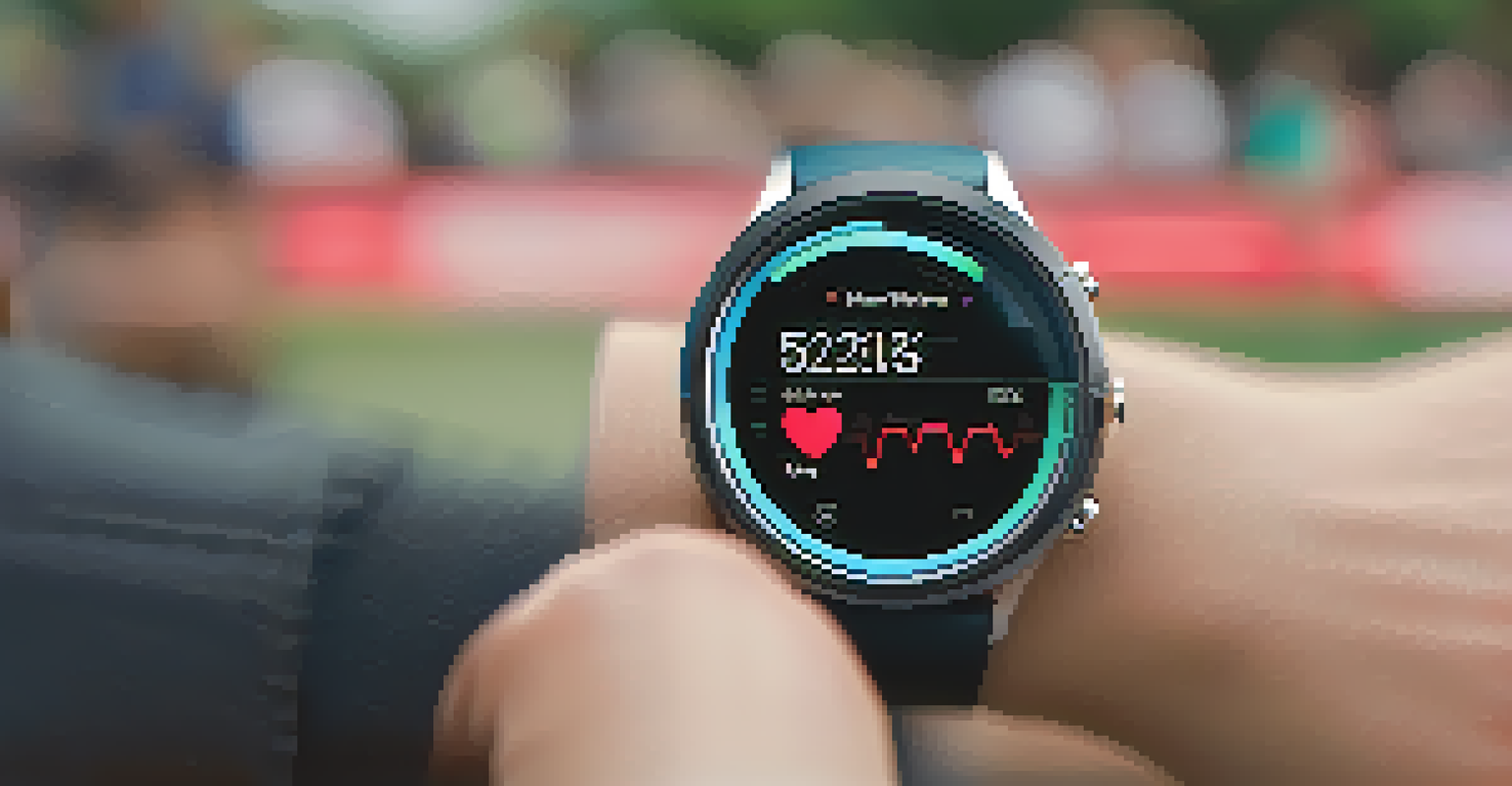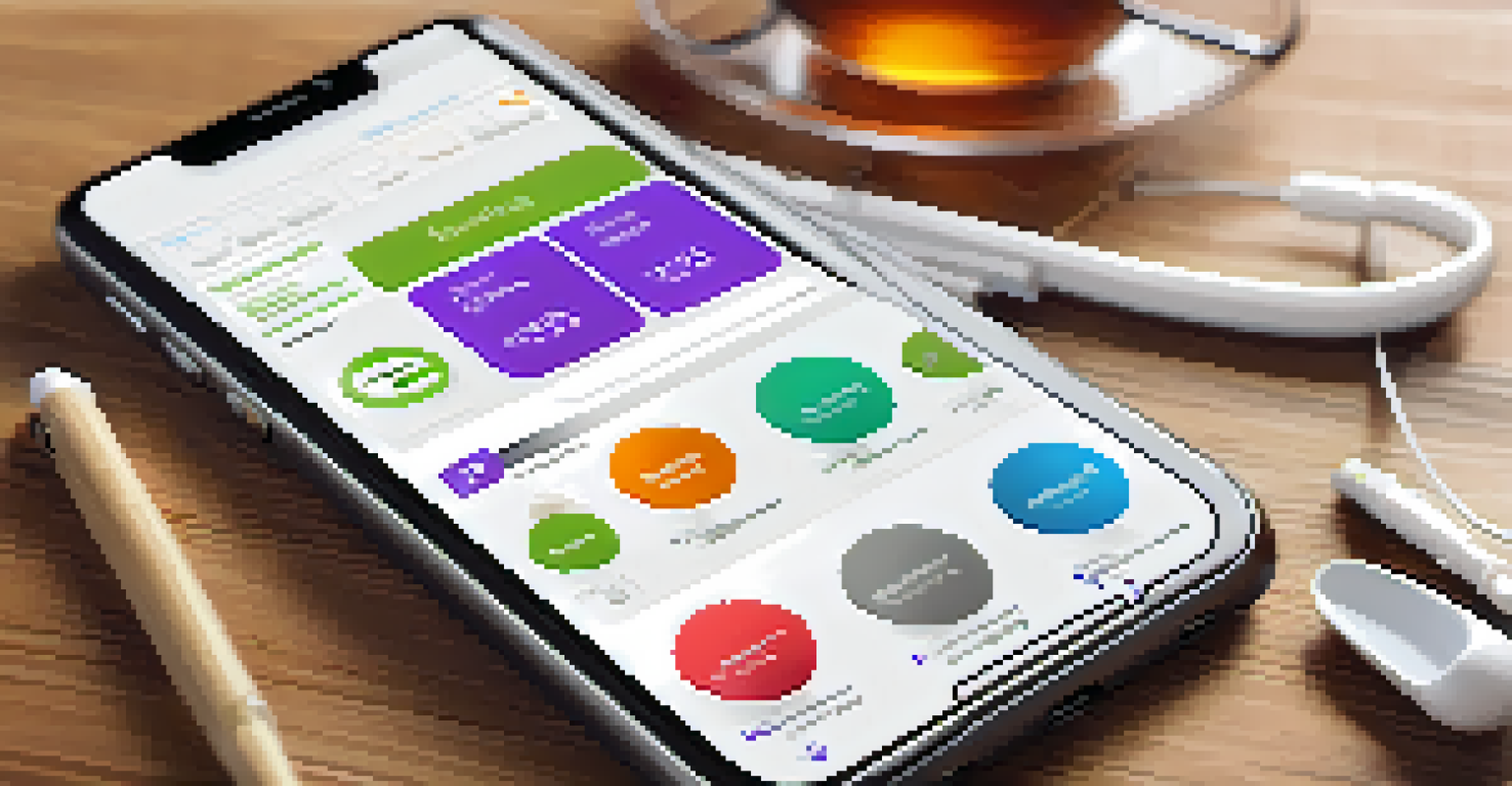How Technology Aids Chronic Disease Management Today

The Rise of Telehealth in Chronic Disease Management
Telehealth has revolutionized the way patients manage chronic diseases. With virtual consultations, individuals can connect with healthcare providers from the comfort of their home, reducing travel time and increasing access to care. This convenience is especially beneficial for those with mobility challenges or those living in remote areas.
The future of healthcare is not about the doctor, but about the patient and their data.
Moreover, telehealth platforms often provide tools for monitoring symptoms and medication adherence, allowing for real-time adjustments to treatment plans. For example, a patient with diabetes can consult their doctor while sharing glucose levels via an app. This instant feedback loop enhances communication and ensures more personalized care.
The pandemic accelerated the adoption of telehealth, but its benefits extend far beyond temporary measures. As technology continues to advance, telehealth is likely to become a staple in chronic disease management, making healthcare more accessible and efficient.
Wearable Technology: Monitoring Health in Real-Time
Wearable technology, like smartwatches and fitness trackers, has become a game changer for chronic disease management. These devices can track vital signs, activity levels, and sleep patterns, providing invaluable data to both patients and healthcare providers. For instance, a heart patient can monitor their heart rate continuously, alerting them to potential issues before they escalate.

This real-time monitoring empowers patients to take control of their health. By receiving immediate feedback, individuals can adjust their lifestyle choices, such as increasing physical activity or adhering to medication schedules. It’s like having a personal health coach on your wrist, reminding you to stay on track.
Telehealth Enhances Care Access
Telehealth allows patients to manage chronic diseases conveniently from home, improving access to healthcare services.
Additionally, wearables can share data with healthcare professionals, facilitating more informed decisions regarding treatment plans. This integration of technology into daily life fosters a proactive approach to managing chronic diseases, ultimately leading to better health outcomes.
Mobile Health Apps: Empowering Patients on the Go
Mobile health apps have made managing chronic diseases more convenient than ever. These applications offer features like medication reminders, symptom tracking, and educational resources, all at our fingertips. For example, an app designed for asthma patients can remind them to take their inhaler and log any symptoms experienced throughout the day.
Technology is best when it brings people together.
The ability to track health metrics over time provides both patients and healthcare providers with critical insights. This data can help identify patterns and triggers, leading to more effective management strategies. Imagine being able to spot what foods trigger your symptoms or what times of day your energy levels dip.
Furthermore, many apps foster community support through forums or chat features, allowing users to share experiences and tips. This element of social interaction can be crucial for those feeling isolated in their health journey, promoting a sense of belonging and encouragement.
Remote Patient Monitoring: Continuous Care at Home
Remote patient monitoring (RPM) systems offer a lifeline for individuals managing chronic diseases from home. By utilizing devices that measure vital signs, such as blood pressure monitors or glucose meters, healthcare providers can keep track of patients' health without requiring them to visit the clinic regularly. This is particularly beneficial for elderly patients or those with mobility difficulties.
RPM not only enhances patient convenience but also improves the overall quality of care. With continuous data collection, healthcare providers can detect issues early and intervene promptly, potentially preventing hospitalizations. For example, a heart failure patient can be monitored for signs of fluid retention, allowing for timely adjustments in treatment.
Wearables Empower Health Monitoring
Wearable technology provides real-time data that helps patients take control of their health and make informed decisions.
Additionally, RPM systems often include educational resources and support tools, helping patients understand their conditions better. This combination of technology and education empowers individuals to take proactive steps toward managing their health.
Artificial Intelligence: Personalizing Treatment Plans
Artificial intelligence (AI) is making waves in the realm of chronic disease management by personalizing treatment plans based on vast amounts of data. AI algorithms can analyze patient information, including genetics, lifestyle, and medical history, to recommend tailored interventions. For instance, an AI system might suggest specific dietary changes for a patient with hypertension based on their unique profile.
This level of personalization can lead to more effective treatment outcomes. By understanding the nuances of each patient's condition, healthcare providers can create strategies that resonate with individual needs and preferences. It’s like having a customized roadmap to better health.
Moreover, AI can assist in predicting potential health crises by recognizing patterns in patient data. This proactive approach can alert both patients and doctors to potential complications, allowing for timely interventions that could save lives.
Data Security: Protecting Patient Information
As technology plays a crucial role in chronic disease management, data security becomes an increasingly important topic. With the rise of telehealth, wearable devices, and health apps, safeguarding patient information is essential to maintain trust between healthcare providers and patients. Cybersecurity measures must be robust to protect sensitive health data from breaches.
Healthcare organizations are implementing advanced encryption methods and secure access protocols to ensure that patient information remains confidential. For example, end-to-end encryption ensures that data transmitted between a patient and their provider is only accessible to authorized individuals.
AI Personalizes Treatment Plans
Artificial intelligence tailors treatment strategies by analyzing patient data, leading to more effective health management.
Patients also play a role in protecting their information by being aware of privacy settings on their devices and apps. Educating individuals about the importance of data security can foster a collaborative effort in keeping health information safe while enjoying the benefits of technology.
The Future of Chronic Disease Management with Technology
The future of chronic disease management is bright, thanks to ongoing technological advancements. Innovations like virtual reality for pain management and blockchain for secure data sharing are on the horizon. These developments promise to enhance patient experience and improve health outcomes even further.
As technology evolves, it will continue to bridge gaps in access to care and empower patients to take charge of their health. Imagine a world where AI-driven systems predict health issues before they arise, or where telehealth is seamlessly integrated into everyday life, making healthcare as accessible as ordering a meal online.

Ultimately, the combination of technology and personalized care will redefine the landscape of chronic disease management. With a focus on innovation, collaboration, and patient empowerment, we can look forward to a healthier future for all individuals living with chronic conditions.